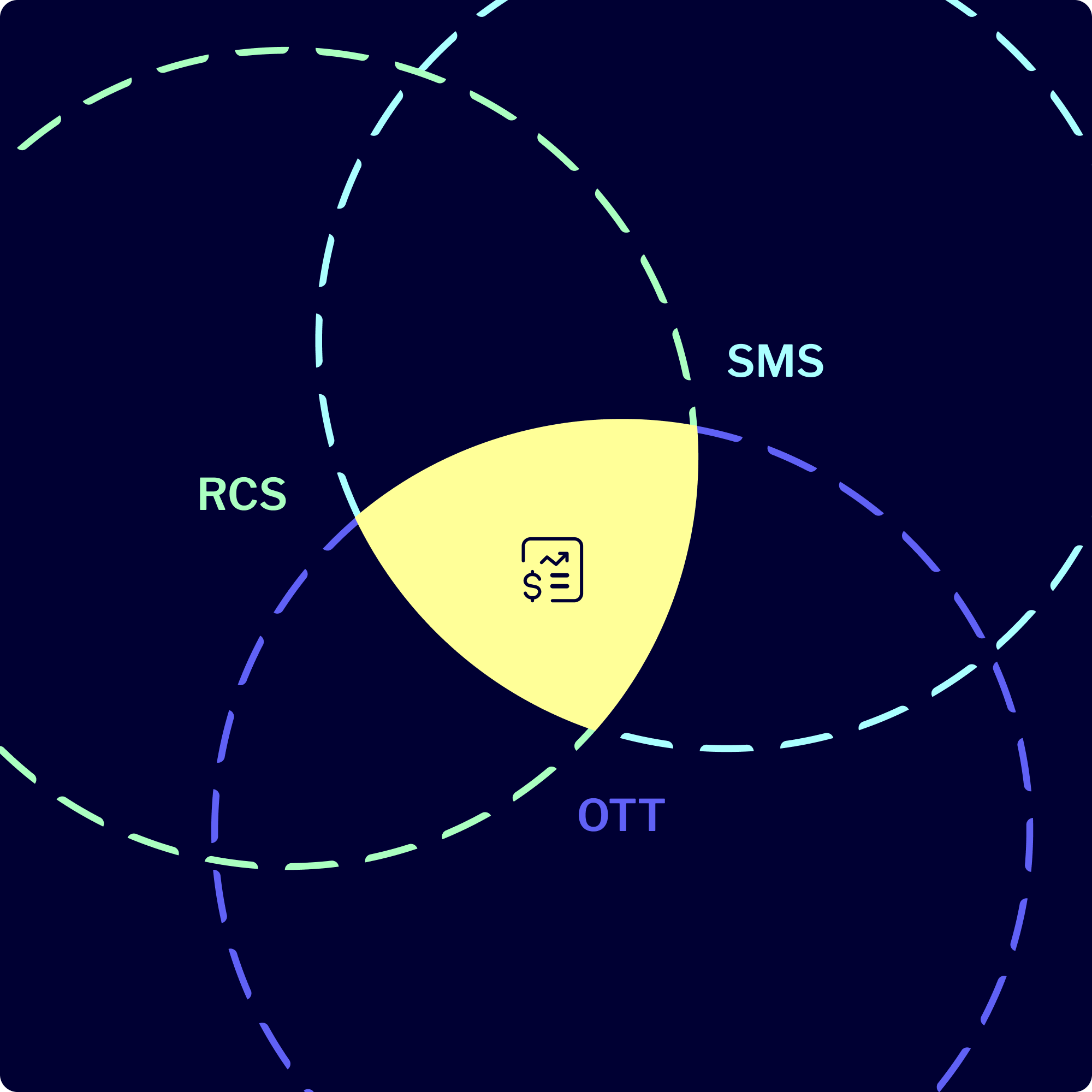Mobile messaging has evolved from simple text exchanges into a complex ecosystem of channels and capabilities. For business leaders navigating these options, understanding each channel’s strengths, limitations, and optimal use cases becomes crucial for crafting effective communication strategies.
The following analysis explores how SMS, OTT messaging, and RCS shape business communication in 2025, helping organisations make informed decisions about their mobile messaging investments.
SMS: The Reliable Foundation
Despite newer technologies emerging, SMS maintains its position as a fundamental communication channel. Its near-universal reach and remarkable open rates make it an essential tool for many use cases. Studies show SMS messages achieve an impressive 98% open rate, demonstrating their effectiveness in reaching audiences.

It’s worth noting that consumer preferences regarding SMS are becoming more specific. Research reveals that just 35% of consumers express positive sentiment toward SMS marketing. 75% of consumers only want to receive transactional messages like shipment tracking, order status updates, and alerts through SMS.
The channel’s usage remains substantial. In 2023, approximately 15,000,000 texts were sent every minute. The engagement rates are equally impressive, as nearly 70% of recipients open messages within five minutes. This makes SMS particularly effective for time-sensitive communications.
OTT: The Evolution of Mobile Messaging Apps
Over-the-top mobile messaging apps have transformed from simple chat platforms into sophisticated communication ecosystems. With over three billion active users across various platforms, OTT messaging has become integral to modern communication strategies.

The market shows strong growth potential. Juniper Research projects OTT business messaging revenue will surge from $2.4 billion in 2024 to $9.8 billion by 2029. Such growth reflects increasing business adoption and expanding capabilities of these platforms.
The global messaging application landscape showcases impressive user numbers across multiple platforms. WhatsApp dominates with 2 billion monthly users, while regional giants like WeChat maintain strong positions with 1.34 billion users.
Facebook Messenger engages 1.01 billion users globally, Viber reaches 1.17 billion people, and Telegram continues to grow with 900 million users. For businesses, these diverse platforms offer opportunities to meet customers on their preferred messaging channels.
Business message volume through OTT channels continues to grow significantly. Juniper Research reports that from 120 billion messages in 2023, projections indicate an increase to 175 billion by 2025, representing 70% growth in just two years.
RCS: Shaping Tomorrow’s Messaging
Rich Communication Services (RCS) represents the next evolution in mobile messaging, designed to enhance traditional SMS with modern features like read receipts, high-resolution media sharing, and interactive buttons. Its native integration with Android devices provides immediate accessibility without requiring additional application downloads. As iPhone compatibility expands and country coverage grows, RCS positions itself as a powerful alternative to established messaging channels.
Recent data from Mobilesquared shows RCS business messaging users grew by 36.3% over the past year, now reaching almost 30% of global smartphone users. These adoption rates signal increasing acceptance of RCS as a business communication channel.

The financial prospects for RCS appear compelling. The market is expected to generate $8.7 billion in revenue in 2029, with projections showing 370% growth between 2024 and 2029. This extraordinary growth trajectory suggests businesses are recognising RCS’s potential for enhanced customer engagement.
SMS vs. RCS vs. OTT
Understanding the distinct advantages and limitations of SMS, RCS, and OTT messaging helps businesses craft more effective communication strategies. Each channel serves specific purposes within the broader mobile messaging ecosystem. Successful organisations often leverage multiple channels to maximise their reach and effectiveness.

Reach and accessibility
SMS maintains unparalleled reach, requiring only a phone number and basic cellular service. This universal accessibility makes it invaluable for critical communications and reaching audiences in areas with limited data connectivity. However, this broad reach comes at the cost of limited functionality and higher per-message costs.
RCS strikes a balance between accessibility and features, offering enhanced capabilities through native Android messaging applications. Sure, RCS hasn’t yet achieved SMS’s universal reach. Nevertheless, its native integration eliminates the friction of application downloads, providing a seamless upgrade path from traditional SMS.
OTT messaging applications offer the richest features but require both parties to use the same platform and maintain reliable internet connectivity. While this might seem limiting, the massive user bases of different OTT messaging platforms often make this a non-issue in many markets, particularly in regions where these applications serve as primary communication channels.
Feature sets and capabilities
SMS provides basic text communication with limited character counts and minimal formatting options. Despite these constraints, its reliability and familiarity make it effective for straightforward, time-sensitive messages like alerts and confirmations.
RCS significantly expands messaging capabilities, supporting rich media, branded messaging, interactive buttons, and detailed analytics. These features enable more engaging customer experiences while maintaining the directness and reliability of traditional SMS. The platform’s ability to fall back to SMS when RCS isn’t available ensures message delivery while maximising opportunities for enhanced engagement.
OTT mobile messaging platforms offer the most sophisticated features, including video calls, file sharing, chatbots, and payment integration. These capabilities enable complex customer journeys and rich interactions within a single platform. However, the feature set varies significantly between platforms, requiring businesses to adapt their strategies for each channel.
Flexibility Drives Competitive Advantage
Looking ahead, the messaging landscape continues to evolve. While SMS maintains its role as a universal foundation, RCS adoption grows steadily, and OTT platforms expand their capabilities. Successful organisations will remain adaptable, adjusting their messaging mix as technologies mature and customer preferences shift.